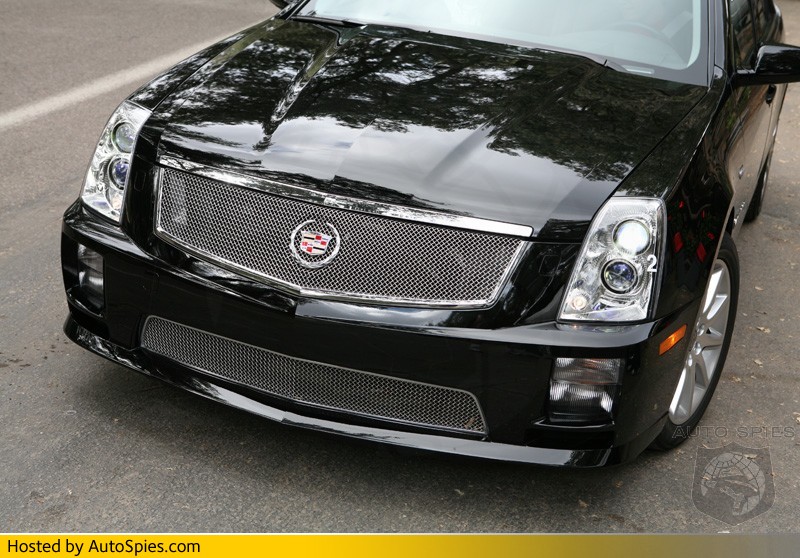
2006 CADILLAC STS-V: SUPERCHARGED ELEGANCE
• New 469-horsepower Supercharged Northstar V-8 Engine
• New Hydra-Matic Six-Speed Automatic Transmission
• Chassis Tuned for the Track or Autobahn
• Exterior Design Combines Elegance, Performance, Functionality
• Leather-Wrapped, Hand-Crafted Interior
The 2006 Cadillac STS-V is General Motors’ most intense expression of Cadillac power and performance yet, and the luxury nameplate’s latest offering in its growing family of high-performance V-Series vehicles.
The STS-V takes the sophistication and performance of the STS luxury sedan to its fullest extension. Via the Cadillac CTS-V, introduced in 2003, Cadillac’s V-Series has earned a reputation for serious performance. The STS-V, debuting in Cadillac showrooms in late-2005, adds a new element of hand-crafted luxury to the V-Series equation.
Designed for luxurious driving, the STS-V has been developed to deliver supercharged, rear-drive performance with an elegant design that is unmistakably Cadillac.
At the heart of the STS-V is a new, 4.4-liter version of the Northstar engine outfitted with a positive displacement intercooled supercharger. The dual overhead cam (DOHC) V-8 engine makes the STS-V the most powerful production Cadillac ever.
Called the Northstar V-8 SC (supercharged), the engine produces 469 horsepower (349 kW) at 6400 rpm (SAE certified*) and 439 lb.-ft. (595 Nm) of torque at 3600 rpm – and the engine’s power is underscored by its ability to deliver 90 percent of its peak torque between 2200 and 6000 rpm. Vehicle redline is 6700 rpm.
The Northstar V-8 SC generates an extra 149 horsepower (111kW) and 115 lb.-ft. (156 Nm) of torque than its naturally aspirated counterpart, and it’s one of the few V-8 engines that makes more than 100-horsepower-per-liter.
However, this engine is more than just power and torque. The DOHC engine includes variable valve timing, enabling outstanding top-end performance while maintaining the expected refinement and quality associated with a luxury marque.
The engine’s aggressive torque curve places STS-V firmly in the under-5-second-club for 0-to-60 acceleration time. Careful engine and transmission calibration enables refined shift feel. During shifts, power is instantaneously lowered, then ramped back up carefully to make gear changes virtually unnoticeable.
The Northstar V-8 SC is mated to the all-new Hydra-Matic 6L80 six-speed automatic transmission – the first use of GM’s new six-speed automatic. The 6L80 – the only transmission offered on the STS-V – is one of the most technologically advanced automatic transmissions in the industry, using clutch-to-clutch operation and an advanced integrated 32-bit transmission controller to deliver smooth, precise shifts.
The 6L80 also incorporates a number of advanced driving enhancement features, including advanced Performance Algorithm Shifting (PAS) and Driver Shift Control (DSC). PAS lets the electronic transmission controller override the automatic gear selection during closed throttle high lateral acceleration maneuvers, rapidly downshifting with the release of the torque converter clutch for smooth powering up when the throttle is reopened. Driver Shift Control allows the driver to sequentially shift gears manually via the gearshift lever.
The STS-V has been tuned for performance on virtually every road condition and environment, including GM’s all-new Milford Road Course facility and the Nordschleiffe (North Course) at Germany’s famed Nürburgring.
As a result, the vehicle has track-capable acceleration, braking and cornering abilities. This is due, in part, to increased tire sizes (P255/45R18 front, P275/40R19 rear); increased brake rotor diameters, larger pad areas, and larger calipers; increased stiffness stabilizer bars and suspension springs; a faster steering ratio; and chassis tuning aimed at delivering high performance without punishing the driver.
Exterior elements enable higher-performance capabilities; yet express the sophisticated elegance associated with the STS name. Exterior refinements include:
• A larger, polished stainless steel wire-mesh front grille that allows additional airflow for engine heat dissipation. The wire-mesh grille marks the sedan as a V-Series, and also is a heritage cue – wire-mesh grilles were applied on the Cadillac V-16, the standard bearer of luxury and performance in the 1930s;
• A new, lower front fascia that incorporates a larger lower grille (also wire mesh) for increased cooling capability; brake ducts for front caliper and rotor cooling; and splitter to counteract lift created by larger grille openings;
• A new lower rear fascia that facilitates smooth airflow under the vehicle for improved cooling;
• Lower rockers that visually bridge the lowered front and rear fascias;
• A specific, fluidly sculpted hood designed to provide space for the engine’s supercharger;
• Ten-spoke, flangeless, painted aluminum alloy wheels that assist in brake cooling. Front wheels are 18 x 8.5 inches; rear wheels are 19 x 9.5 inches;
• A higher, more rearward-positioned rear spoiler that enables balanced aerodynamic downforce with the front splitter; and
• V-Series badging prominently displayed on the vehicle’s rear decklid and front doors along with “Supercharged” block lettering on the doors.